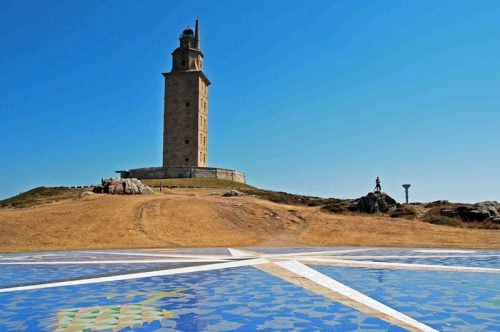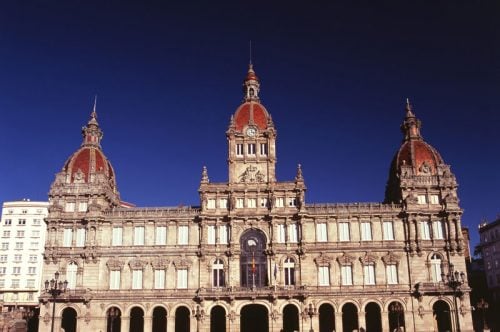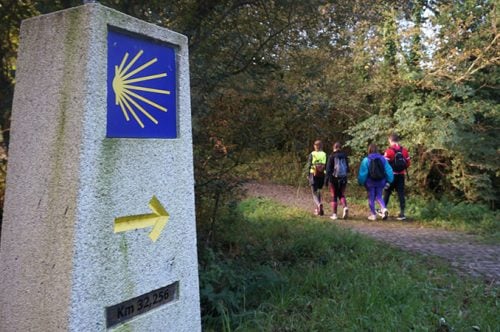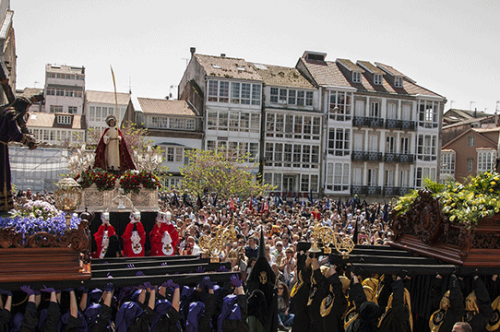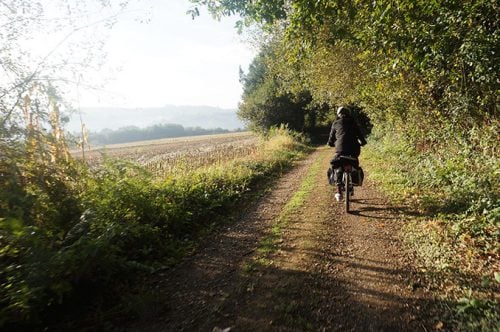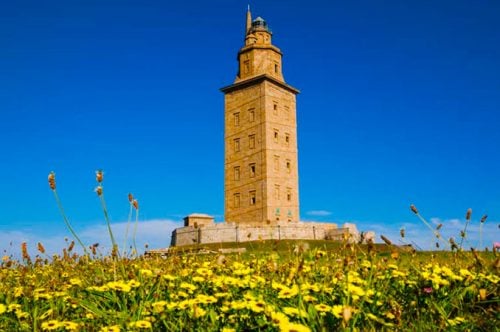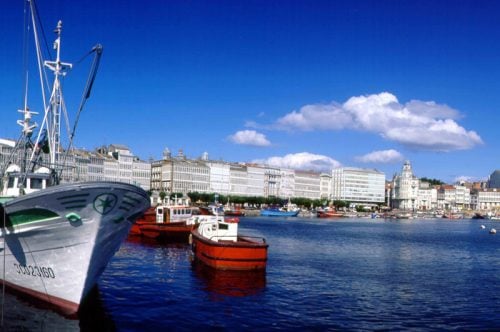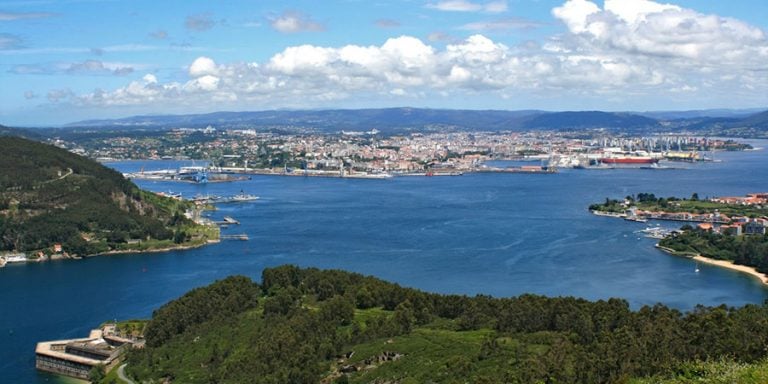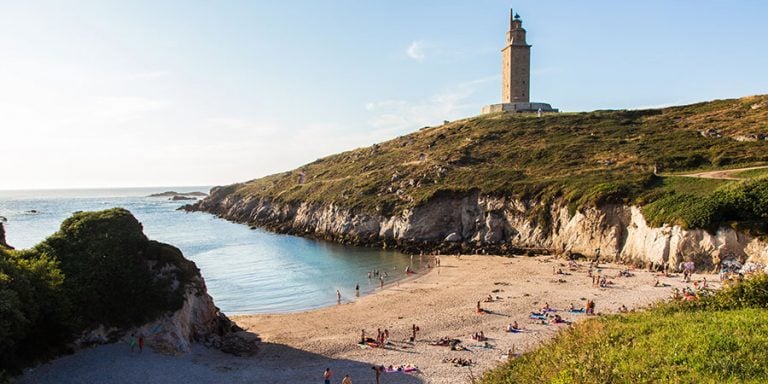The Camino Ingles
The English Way to Santiago Guide
The Camino Ingles, or English Way, is one of the most historic and rewarding Camino de Santiago routes. Once the preferred path for pilgrims from England, Ireland, and Northern Europe, this Camino de Santiago offers a shorter yet deeply meaningful experience filled with history, warmth, and Galician charm.
In medieval times, pilgrims arrived by sea to the Galician ports of Ferrol and A Coruña, beginning their inland journey to Santiago de Compostela. Today, these two starting points remain traditional gateways to the Camino Ingles:

- Camino Ingles from Ferrol (119 km) – the most popular route, long enough to earn the official Compostela certificate.
- Camino Ingles Celtic Camino from A Coruña (75 km) – a scenic alternative for those with less time or who have already completed the first part of the Celtic Camino in Ireland, Scotland or Wales.
The Camino Ingles may be one of the shorter routes, but it captures the true spirit of the Camino. Pilgrims walk through peaceful woodlands, rolling countryside, and quaint Galician villages, ending at the magnificent Cathedral of Santiago de Compostela. With fewer crowds than other routes, it offers a more personal, reflective journey — ideal for those seeking connection and tranquillity.
Along the way, you’ll enjoy Galicia’s legendary hospitality and delicious local cuisine, from fresh seafood to traditional empanadas. Whether you walk it in a week or take your time, the Camino Ingles is perfect for travellers looking for an authentic, manageable, and soulful pilgrimage experience.
Why Walk the Camino Ingles?
The Camino Ingles is perfect if you want a shorter and quieter Camino. It captures all the essentials: woodlands, rolling hills, stone villages, historic towns, and the triumphant arrival in Santiago.
With fewer crowds than the Francés or Portugués, it offers a more personal and reflective journey. Along the way, you’ll experience authentic Galician hospitality — from welcoming locals to hearty cuisine like fresh seafood, empanadas, and wines.
For Irish and British pilgrims, the English Way also carries a deep historic connection, following the same route their ancestors once sailed to reach Santiago.
Suggested Routes
Highlights of the Camino Ingles
- Ferrol – historic naval city and impressive Easter “Semana Santa” festival.
- Pontedeume – coastal town with a medieval bridge and beach.
- Betanzos – charming old town with Gothic churches and heritage.
- Bruma & Meson do Vento – rural hamlets offering peaceful countryside.
- A Coruña – Celtic Camino start, with Roman lighthouse (Tower of Hercules).
- Santiago de Compostela – finishing at the cathedral, as pilgrims have for centuries.
What makes it special?
This route feels like a “Camino in miniature”: shorter in length but big on history, atmosphere, and reward. Every day brings a mix of coast, countryside, and medieval towns, ending with the same emotional arrival at Santiago’s cathedral square.
Camino Ingles Route Options
Camino Ingles from Ferrol (119 km)
- Qualifies for the Compostela certificate.
- 6 walking days: coastal views (Pontedeume, Betanzos) followed by inland countryside to Santiago.
- Ideal for pilgrims with one week.
Camino Ingles from A Coruña (75 km) – The Celtic Camino
- Shorter option (4 days).
- Doesn’t meet the Compostela requirement unless combined with an Irish route (e.g. The Kerry Camino).
- Popular for those retracing Celtic seafaring pilgrim paths.
Certificates
- From Ferrol (119 km): Compostela awarded.
- From A Coruña (75 km): requires completion of a Celtic Camino in Ireland to qualify.
- Cycling: possible, but does not meet the 200 km requirement for Compostela.
👉 Learn more: Compostela Certificates.
Camino Ways Route Planner
For over 1000 years, pilgrims from all over the world have walked the Camino Ways across Europe in their quest for spirituality. Making the pilgrimage to Santiago de Compostela in Spain, they encountered a variety of people, cultures and beliefs, leading to friendship and new experiences. This continues today with the Camino de Santiago being the most well known and well-loved walk in the world. More than just a walk, the Camino de Santiago is an unforgettable and unique journey for the body, mind and soul.
When to Walk
- Best months: March–November (spring and autumn especially).
- Summer: mild (avg 25°C), not as hot as inland Spain.
- Winter: walkable, but cooler and wetter.
👉 See: Best time to walk the Camino.
Terrain Camino Ingles
- Mixture of coastal and inland countryside.
- Daily ascents/descents: ~300 m (moderate).
- Initial coastal days more challenging; last stages easier.
👉 Prepare with our Camino Fitness Plan.
What To Bring On The Camino Ingles?
Our Camino packing guide ebook is free to download. This will help you decide what to bring on your Camino.
History of the Camino Ingles
The Camino Ingles dates back to the 12th century, when pilgrims from England, Ireland, and Scandinavia arrived by ship in Galicia.
- 1147: English Crusaders landed in Ferrol and A Coruña en route to the Holy Land, helping Portugal’s first king capture Lisbon.
- Medieval seafaring pilgrims: Icelandic monk Nicholas Bergson recorded maritime pilgrim routes from Iceland through Europe.
- British devotion: Pilgrims offered gifts such as the alabaster altarpiece (1456) and the famous “Pearl Cross,” donated by James IV of Scotland.
- Royal support & hospitals: Orders like Sancti Spiritus and Franciscans built pilgrim hospitals in Ferrol, Betanzos, and Bruma.
These records prove the Camino Ingles as one of the most international pilgrim routes, linking Northern Europe with Santiago.
👉 Discover more: History of the Camino de Santiago.
Camino Made Easy
With CaminoWays, your Camino Inglés includes:
- Handpicked hotels in towns & villages.
- Luggage transfers so you can walk light.
- 24/7 support, maps & walking notes.
👉 See Guided Tours or Self-Guided Tours.
FAQs
Where does the Camino Ingles start?
The Camino Ingles begins in either Ferrol (119km) or A Coruña (75km). Only the Ferrol route qualifies for the Compostela certificate, unless you have also walked the Celtic Camino in Ireland.
How long is the Camino Ingles?
From Ferrol, the Camino Ingles is 119km and usually takes six walking days. From A Coruña, it is 75km and can be completed in about four days. Compare with the last 100km of the Camino Frances.
Can I get a Compostela walking the Camino Ingles?
Yes, but only if you start in Ferrol and walk the last 100km into Santiago. Starting from A Coruña does not meet the minimum distance unless you first complete the Celtic Camino.
What is the terrain like on the Camino Ingles?
The Camino Ingles has hilly terrain with daily ascents and descents of around 300m. It combines scenic coastal stretches with quiet inland countryside. For packing help, see our Camino packing list.
When is the best time to walk the Camino Ingles?
This route can be walked year-round, but the best months are March to November. Summers are mild (around 25°C) and winters are cool but not extreme. For more details, visit our best time to walk the Camino guide.
The Sections Of The Camino Ingles
We offer 2 Camino Ingles Self-Guided Route options, but you can customise all our routes to start wherever you live.
- Camino Ingles from Ferrol (119 km)
- Camino Ingles from A Coruna (75 km)
The Camino Ingles From Ferrol Route Description
The first two walking days of the Camino Ingles from Ferrol are beautiful. You weave along the coast, soaking in the seaside views. The towns you visit along the way are quaint and pretty, with Pontedeume and Betanzos being particular highlights.
You can pause between towns to rest or enjoy a refreshing swim at A Magdalena beach. Betanzos is rich in history, and exploring its beautiful old buildings is one of the town’s great joys.
Bruma Meson do Vento and Sigüeiro are your last two stops before arriving in Santiago de Compostela. The green countryside around Ordes near the Church of San Xiao offers a final, peaceful rural moment on your Camino.
Ferrol is home to one of Galicia’s most renowned and essential Easter festivals. If you are travelling during Spring, Semana Santa de Ferrol is an absolute must-see.
The Camino Ingles From A Coruña (The Celtic Camino) Route Description
The English Celtic Camino is gaining popularity among walkers from all over the world. In ancient times, pilgrims from the UK and Ireland would have arrived by boat to the port of A Coruña to continue their Camino journey.
Starting 75km outside Santiago Compostella, the English Celtic Camino traverses the rugged Galician coastline before cutting inland and joining the English Camino from Ferrol in Bruma Meson de Vento. This walk can be completed in a four-night trip.
Recently, this route was less popular with pilgrims as they could not receive their Compostela. The cathedral in Santiago has allowed special provisions for pilgrims who walk routes such as the Kerry Camino in Ireland before they arrive in Spain to claim their certificate.
The Camino Ingles is the short Camino with a big soul
Perfect for those with limited time, it offers history, scenery, and the authentic pilgrim spirit in just a few days. Whether you walk from Ferrol for your Compostela or from A Coruña on the Celtic route, you’ll arrive in Santiago with a true Camino experience.
👉 If you’d like a personalised Camino Ingles itinerary, try our Award Winning Camino Planner.
